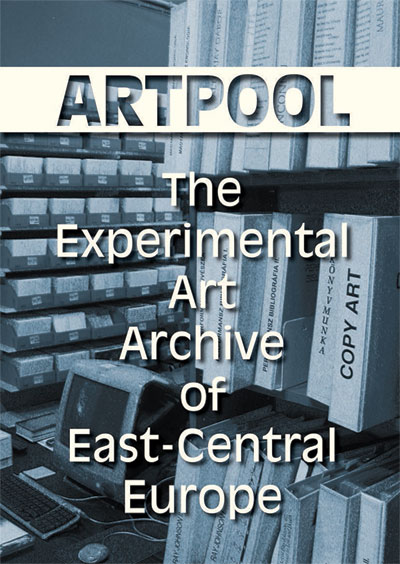ARTPOOL - The Experimental Art Archive of East-Central Europe
History of an active archive for producing, networking, curating, and researching art since 1970
 Edited by
Edited by
György Galántai and
Julia Klaniczay
Foreword by Kristine Stiles
Artpool, Budapest, 2013
21 x 29.7 cm, 536 pages,
with approx 1500 illustratons,
index of names, softcover,
English, printed in 500 numbered copies
ISBN 978-963-08-7225-6
16.500 Ft / 55 EUR / 75 USD
+ postage
(available also on exchange)
The publication was supported by
ERSTE Foundation and the
National Cultural Fund of Hungary
Browse the pdf version of the book here
or download the interactive pdf from here (81 MB)
BOOK REVIEWS BOOK FEEDBACKS
BOOK PRESENTATION : BUDAPEST - BERLIN - VIENNA
BOOKFAIR: LEIPZIG
BOOK DESCRIPTION
How could an arts initiative, called Artpool, in the 1970s, in a small corner of the world, in East-Central Europe, become a significant node, a reference point in a worldwide – initially analogue (postal) then digital (online) – network?
How has it been able to validly speak out and address issues and people again and again in the ‘storms’ of history and scientific-technological progress, for more than four decades now?
Using authentic documents, numerous photographs and illustrations Artpool’s chronological volume containing a brief presentation of events and exhibitions, a detailed bibliography and references follows the history of the Artpool art project – launched more than forty years ago by fine artist György Galántai and later jointly realized with Júlia Klaniczay – from the exhibitions of the Chapel Studio active in Balatonboglár between 1970 and 1973, through the establishment of the Artpool archive in 1979 to the opening of the Artpool Art Research Center in Budapest in 1992 and its becoming an esteemed research facility by the 2010s.
Hundreds of artists from all corners of the world sent their works to the international Artpool exhibitions, which are built on the "Active Archive" concept and explore themes inspired by our perpetually changing world, in the same way as György Galántai and Artpool also participated in the events organized in the various other nodes of the "Eternal Network".
The information accumulated in Artpool over the forty years, the collections that were built up, and the research work based on them form the tissue of today’s institute, which beyond the developments in the art scene also informs us about the eventful forty or so years during which Artpool came into being and has continued to operate. This period can be best described by the following keywords: communism, iron curtain, secret files, tapping telephone wires, bans, "the happiest barrack", samizdat publications, counterculture, change of the system, democratic transition, freedom of the press and speech, independent non-profit initiatives, European Union, strengthening nationalism and conservatism; 20th century, millennium, 21st century; technological and communication explosion ...
"The occasion of the publication of ARTPOOL The Experimental Art Archive of East-Central Europe is a milestone in the history of art for its documentation of a remarkable period in the chronicles of conceptual, performance, installation, and video art, as well ephemeral mediums such as mail art and artists’ stamp sheets, postcards, rubber stamp imprints, artists’ writings and samizdat publications. The work represented in the Artpool archive is astonishing in its scope and quantity, quality of imagination, intellectual force, and the courage of the artists who created it. This volume presents an opportunity to reflect on the events that brought Artpool into being, to acknowledge that while originating in the context of East-Central Europe, Artpool’s community has always been international, and to evaluate its broad contributions to world culture and society." (Kristine Stiles)
 Edited by
Edited by